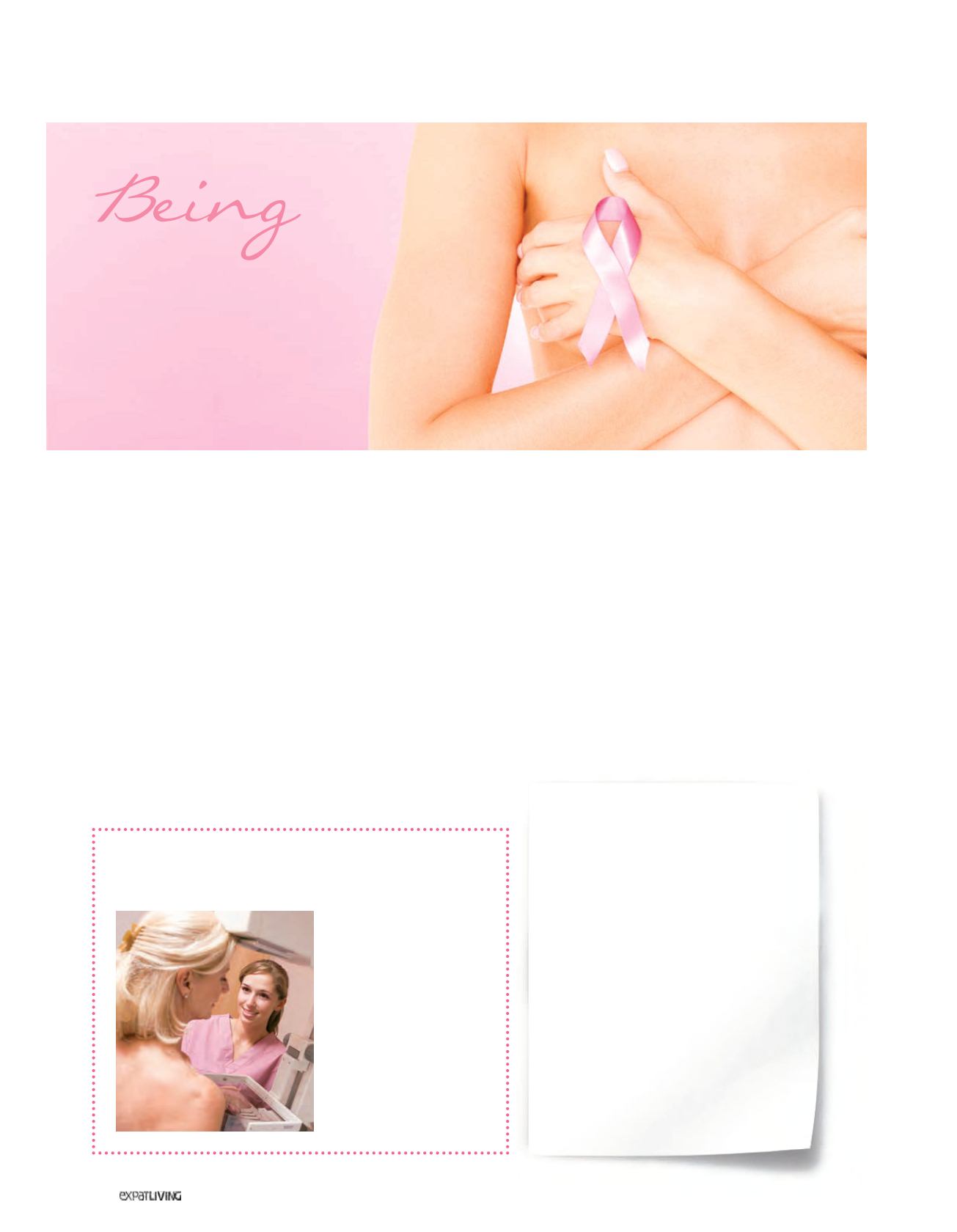

HEALTH&FITNESS
302
October14
By Amy Greenburg
BREAST
AWARE
Syda Productions, Monkey Business Images | Dreamstime.com
In honour of Breast Cancer Awareness Month, we asked
gynaecologist and obstetrician, DR CHRISTOPHER NG of
GynaeMD Women’s and Rejuvenation Clinic, to educate
us on the terrible disease and how we can detect it as
early as possible.
What are the risk factors for breast cancer?
They include family history (inherited mutated genes), personal history,
increasing age, obesity, alcohol consumption, radiation exposure, early
menarche and late menopause, having your first child after the age of
35, having never been pregnant, and excessive hormonal exposure –
especially women who undergo hormone replacement therapy (HRT) for
longer than five years after menopause. Any woman is at risk of developing
breast cancer, but those with these risk factors are in greater danger.
What are the symptoms that women should look out for?
Breast lumps, skin changes, including pitting and dimpling, change in
breast shape, bloody nipple discharge and nipple inversion.
What’s a mammogram?
During a mammogram, each breast is compressed between two
plates to flatten and spread the tissue for a few seconds. Though
it can be uncomfortable for
a moment, it’s necessary
in order to produce a
good quality, readable
mammogram.
Thegoal ofmammography
is to detect breast cancer,
and in the earliest stage
possible; when caught early,
localised cancers can be
removed without resorting
to mastectomy (breast
removal).
What forms of screening are used to
diagnose breast cancer?
The most effective and proven method to detect
breast cancer early is an X-ray of the breasts, or
mammogram, and this can be combined with
an ultrasound scan of the breast in some cases.
Women are also encouraged to examine their own
breasts on a monthly basis, after their periods have
ended – although this is not considered as accurate
as mammography.
So, how often should women undergo
mammograms, and at what age should
they start?
Women aged 40 and above should go for
a screening mammogram once a year until
they reach menopause, after which screening
mammograms are recommended every two years.
The Age Quandary
In recent years, there has been controversy
over when and how often women should
go for mammograms – while some cancer
doctors argue that yearly mammograms are
only necessary for women above 50, other
experts maintain that mammograms should
be performed from the age of 40.
Nevertheless, the majority of doctors
agree that women under 40 do not need
yearly mammograms unless they’re at high
risk, with strong family histories of breast
or ovarian cancers. In fact, according to
Cancer Research UK, mammograms are
more difficult to read in younger women
because their breast tissue is denser.
There’s also little evidence that regular
mammograms for most women under 40
reduces deaths from breast cancer.



















